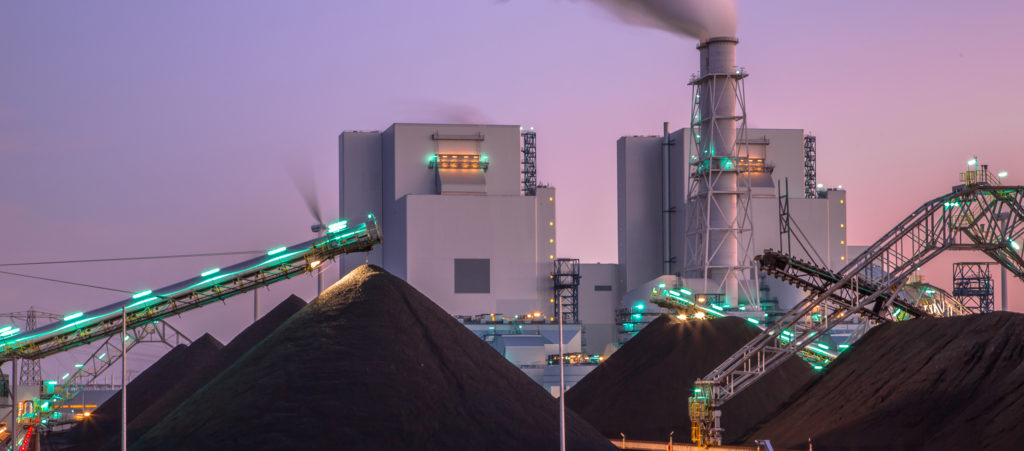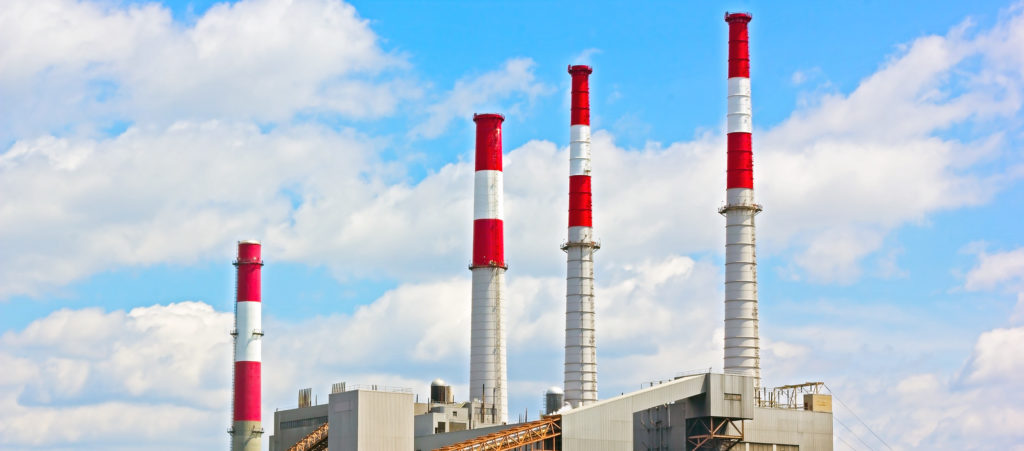Three decades of emissions monitoring research help industry navigate new challenges
In 1990 the U.S. Congress amended the Clean Air Act to create the Environmental Protection Agency’s (EPA’s) Acid Rain Program. The program, which officially launched in 1995, was targeted at lowering the impacts of acid rain on human health as well as fish, wildlife, and entire ecosystems (a common consequence of acid rain was dying forests). To address those problems, the Acid Rain Program was designed to drastically reduce the power sector’s emissions of sulfur dioxide (SO2) and nitrogen oxides (NOx), which are the primary precursors of acid rain.
Fast-forward 30-plus years, and the effort to slash pollutants associated with acid rain is considered a big success. The cap-and-trade system that established market incentives and encouraged technology innovations has resulted in significant NOx and SO2 emissions reductions.
For the past three decades, various other regulations have also required utilities to monitor and reduce emissions at natural gas- and coal-fired power plants. The most consequential EPA regulations include the Cross-State Air Pollution Rule and the Mercury and Air Toxics Standard (MATS). These regulations are designed to reduce smog, soot, and air toxics. They also establish monitoring and performance requirements related to everything from mercury to particulate matter, as well as hydrochloric acid in site-specific instances.
Two years after Congress established the Acid Rain Program, EPRI launched the Continuous Emissions Monitoring (CEM) Program, which became the Continuous Emissions Monitoring and Measurements Program last year. The ongoing EPRI initiative combines longstanding work by the generation sector with EPRI’s environmental controls expertise.
How Larger Industry Trends Impact Emissions Monitoring
In recent years, the ability of utilities to accurately monitor and analyze emissions from their power plants has been shaped by larger industry trends. For example, power plant operators face the challenge of continuously changing and increasingly strict regulations. At the local level, limits on NOx, ammonia (NH3), and carbon monoxide (CO) can require increasingly accurate gas turbine emissions measurements on the order of two parts per million.
Even as regulations tighten and the importance of accurate monitoring rises, many utilities are also navigating lower operations and maintenance (O&M) budgets and a wave of retirements by workers with expertise and experience. Indeed, a report issued by the U.S. Department of Energy (DOE) in 2017 forecast that a quarter of electric and gas utility workers in the country would retire by 2022.
The evolution of the power system is also changing the emphasis of CEM systems. According to the U.S. Energy Information Agency (EIA), nearly 30% of America’s operating coal plants are set to be retired by 2035, a total of 59 gigawatts of capacity. Between 2011 and 2020, over 100 coal plants representing nearly 50 gigawatts of capacity either closed or converted to natural gas. “What keeps us busy is that regulations continue to change, and the industry portfolio also is changing due to low natural gas prices, increased pressure to scale renewables, and future planning based on accelerated decarbonization,” said Cassie Shaban, an EPRI technical leader. “We continue to support coal plants with our research, but we have also added new gas-related topics to help members.”
Three Decades of Research Informing CEM Improvements
EPRI’s ability to support a changing industry’s capacity to cost-effectively comply with regulations while also providing objective research to inform regulatory changes is built on its long history of CEM achievements. In fact, many of the best practices and regulatory insights EPRI has collected over the past three decades can be found in the regularly updated Continuous Emissions Guidelines.
To better understand EPRI’s ongoing role, it’s helpful to know how CEM regulations work in the U.S. Unlike European regulators, which certify individual monitoring systems, the EPA gives plant operators some flexibility in the technologies they use to monitor emissions. “Instead of bringing a CEM system to a test facility, in the U.S., the EPA monitoring regulations have very prescribed initial certification, quality assurance, and quality control tests,” Shaban said. In addition to federal regulations, some utilities are subject to state and local laws.
This means that EPRI works with a wide array of equipment manufacturers, utilities, and other stakeholders to improve the performance of CEM equipment so that it can consistently meet the EPA’s quality assurance requirements. Common CEM systems include gaseous monitors, stack flow monitors, mercury CEM, and continuous particulate matter monitoring systems.
One area where EPRI has been especially active is developing, testing, and improving the calibration of particulate matter monitoring systems. Over the past decade, EPRI has worked with several equipment vendors to pilot an approach to calibrating these systems. These and other research efforts have also helped inform the EPA’s approved calibration methodology.
For the operators of fossil fuel power plants, the calibration of particulate matter monitoring systems has been an expensive and time-consuming task. That’s because the rules require them to change the concentration of particulate matter emissions to demonstrate that the monitor accurately tracks the change. “But to do that, you have to adjust the load of the plant or turn down whatever particulate matter capture device you have. But at the same time, you are not allowed to go over your emissions limit,” Shaban said. It’s a process that consumes a lot of time and typically involves bringing in contractors to help—an added expense for utilities. In response, EPRI developed an alternative calibration method that achieves compliance but does not require a plant to go offline.
EPRI has also helped drive technology improvements in mercury emissions monitoring. EPRI has worked with equipment manufacturers, utilities, and other stakeholders to test and demonstrate mercury sorbent trap monitoring systems and mercury continuous emission monitoring systems. Today, about two-thirds of emissions sources that are subject to MATS requirements for mercury use either continuous emissions monitoring or sorbent trap systems.
Technology Development to Aid a Changing Industry
Recent EPRI research has been focused on ways to help utilities navigate smaller O&M budgets, a smaller number of experienced workers, and generation portfolios more heavily reliant on gas. Optical-based monitoring systems installed directly in a power plant’s stack or ductwork—known as in situ installations—are one of the most promising new technologies.
In situ optical-based CEM systems have the potential to dramatically reduce CEM O&M costs by eliminating the need for a sample probe, heated umbilical sample line, and sample conditioning system, as well as reducing required service and consumables such as calibration gas. EPRI is currently demonstrating the application of optical-based CEM systems in both gas- and coal-fired plants for a range of species measurements.
While there are different optical-based measurement technologies, all rely on the basic fact that the amount of light a molecule absorbs is proportional to its concentration. Therefore absorption patterns can be used to identify a specific component. EPRI is currently pursuing demonstration projects to test different optical-based monitoring technologies.
In situ optical-based measurement systems could also be beneficial for selective catalytic reduction (SCR) process control of ammonia injection on gas-fired combustion turbine units that are operating flexibly in response to intermittent renewable generation. This is because in situ measurements provide a much faster response than extractive approaches. EPRI is looking to demonstrate the potential benefits of an in situ SCR process control approach in a supplemental project.
EPRI is also working to help lower O&M costs by helping utilities navigate end-of-life issues around their CEM systems, many of which have been in operation for decades. EPRI surveyed utilities last year to better understand how companies manage equipment life cycles, including whether they are opting to buy new equipment or maintain existing systems.
The survey found that 42% of utilities included CEM life cycle in their equipment replacement and maintenance strategy and that 58% have a lifespan plan for each CEM system. Other findings included the reasons utilities replaced criteria pollutant CEM systems: 33% did so because vendors no longer supported the system, 15% cited increasing maintenance demands, and 17% pointed to the difficulty in finding parts. EPRI is taking that feedback along with other research and insights to develop a best practice guide for managing aging equipment and spare parts.
To help utilities educate newer workers who are replacing experienced employees, EPRI has put a special emphasis on knowledge transfer. EPRI’s CEM Interest Group conducts quarterly webcasts and hosts an annual conference where utilities can share their experiences and learn about new technologies. The 2022 CEM User Group Conference and Exhibit will be held in Indianapolis on May 11 and 12.
These knowledge-sharing events deliver real value to utilities grappling with similar issues. “The EPRI programs and Continuous Emissions Monitoring User Group [CEMUG] have always provided beneficial work to help solve emissions monitoring problems for us,” said Wade Bice, the co-chair of EPRI’s Continuous Emissions Measurement and Monitoring Program (Program 233) and a supervisor at Alabama Power Company. “They allow multiple utilities to gather together to discuss issues we face on a daily basis. And, where applicable, EPRI works as a central group to develop solutions that will benefit everyone involved. They help us stay current with cutting-edge technology and help determine whether or not a particular instrument or technology application is beneficial to the industry.”
EPRI Technical Experts:
Cassie Shaban, Richard Himes
For more information, contact techexpert@eprijournal.com.
Additional Resources:
- Continuous Emission Monitoring Guidelines: Overview of the 2021 Update (3002021905)
- Continuous Emission Monitoring Guidelines: 2021 Update (3002021906)
- Preliminary Assessment of Optical CEMS Measurements on a Coal Fired Boiler: UV-DOAS Measurement Feasibility Assessment (3002021911)
- Gas Turbine Combined Cycle Laser-Based CEMs Demonstration (3002022785)
- Laboratory Investigation of Three-Dimensional Velocity Probe Plugging in Wet Stack Conditions: Evaluating the Impact of Probe Design and Coatings on Plugging (3002018597)



